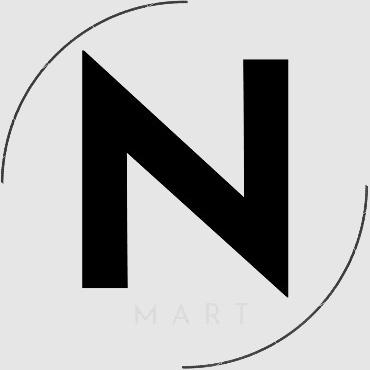Best Place to Hire a Website Designer
In today’s digital age, we must find the Best Place to Hire a Website Designer, having a strong online presence is essential for businesses and individuals alike. A well-designed website can attract customers, showcase your work, and build credibility. But how do you find the right website designer to bring your vision to life? In this article, we’ll explore the best places to hire a website designer, share tips on how to hire one and discuss costs and benefits. Plus, I’ll share my experience to help you along the way.

Table of Contents
Why Hire a Website Designer?
Before we dive into where to find a designer, let’s address the question: Why hire a website designer? Here are a few compelling reasons:
- Professional Expertise: Designers bring a wealth of knowledge about design principles, user experience, and coding. Their expertise can save you time and frustration.
- Custom Solutions: A professional designer can create a website tailored to your specific needs, rather than relying on templates that may not fit your brand.
- SEO Optimization: Many designers understand the basics of SEO (Search Engine Optimization), ensuring your site is more likely to rank well on search engines.
- Responsive Design: With users accessing websites from various devices, a designer can ensure your site looks great on desktops, tablets, and smartphones.
- Ongoing Support: Hiring a designer often comes with the option for ongoing maintenance and support, making it easier to update your site as needed.
How to Hire a Website Designer
Finding the right designer can be overwhelming. Here are some steps to simplify the process:
- Define Your Needs: Before looking for a designer, know what you want. Are you building a new site, or redesigning an existing one? Do you need e-commerce capabilities, or is it more of a portfolio site? Having clear goals will help you communicate with potential designers.
- Set a Budget: How much does it cost to hire a website designer? Costs can vary widely based on experience, project scope, and location. Expect to pay anywhere from $200 to $5,000 for a standard website. High-end designers or complex sites may cost even more. Setting a realistic budget and understanding what you’re getting for that price is important.
- Research Potential Designers: Use platforms like Fiverr, Upwork, and Behance to find designers with relevant experience. Look for portfolios that align with your style and needs.
- Check Reviews and References: Read client reviews and ask for references. This will give you insights into a designer’s reliability and quality of work.
- Ask About Their Process: Every designer has a different approach. Inquire about their design process, timelines, and how they handle revisions. A clear and structured process can save you time and headaches later on.
- Communicate Your Vision: When you find a designer you’re interested in, share your ideas, goals, and any examples of sites you like. Clear communication is key to ensuring your vision is understood.
- Evaluate Proposals: Once you’ve narrowed down your options, request proposals. Look for details about costs, timelines, and deliverables to help you make an informed decision.
- Start with a Small Project: If you’re unsure about a designer, consider starting with a small project. This can help you gauge their skills and whether you’re a good fit.
Best Places to Hire a Website Designer
1. Freelance Platforms
Freelance websites like Fiverr, Upwork, and Freelancer offer a wide range of designers at various price points. Here’s my experience with using Fiverr:
- Fiverr: I turned to Fiverr for a project where I needed a quick redesign. I found a designer with great reviews and a portfolio that impressed me. The process was straightforward — after discussing my needs, I received multiple concepts to choose from. The final product was delivered on time, and the designer was open to revisions, which made the experience seamless. You can Check this.
- Upwork: Upwork offers a wide range of freelance professionals, including web designers. You can post your project and receive proposals from interested designers, making it easier to compare skills and costs.
- 99designs: This platform is perfect for those who want to run a design contest. You provide a brief, and designers submit their concepts. You can choose the one you like best.
2. Design Agencies
If you prefer working with a team rather than an individual, consider hiring a design agency. Agencies often have a diverse range of skills and can handle larger projects more effectively. They can also provide ongoing support and marketing services.
- Local Agencies: Searching for local agencies can be beneficial. You may find designers who understand your market and can meet with you in person.
- Online Agencies: Many agencies operate online and have remote teams. This can give you access to a wider talent pool.
3. Social Media and Networking
Don’t underestimate the power of social media. Platforms like LinkedIn and Instagram are great for discovering talented designers. You can view their work, see client testimonials, and reach out directly.
- LinkedIn: Use LinkedIn to search for web designers. You can check their experience, endorsements, and previous work.
- Instagram: Many designers showcase their portfolios on Instagram. Use relevant hashtags to find profiles that match your style.
4. Referrals and Word of Mouth
Ask friends, family, or colleagues for recommendations. Personal referrals can lead you to trustworthy designers who have proven their skills.
5. Job Boards
Posting a job ad on websites like Indeed or Glassdoor can attract a variety of candidates. You’ll likely get applications from both freelancers and agencies.
My Experience with Hiring a Website Designer
When I was looking for a website designer for my projects, I faced a similar dilemma. I needed a professional who could understand my vision and deliver high-quality work. Here’s how I navigated the process:
- Define My Needs: I started by outlining what I wanted—a clean, modern website that showcased my services.
- Set a Budget: After researching, I set a budget of around $2,500, which I found was reasonable for the level of design I wanted.
- Research: I explored platforms like Fiverr and Upwork. I compared portfolios and read reviews to find a designer with experience in my industry.
- Communication: Once I found a few candidates, I reached out to discuss my project. I was impressed by one designer’s proactive approach and clear communication.
- Trial Project: To test the waters, I started with a small project. This helped me understand the designer’s process and whether our styles matched.
Ultimately, I found a designer who not only delivered on my initial project but also provided ongoing support. This experience taught me the importance of clear communication and setting realistic expectations.
Conclusion
Hiring a website designer doesn’t have to be a daunting task. By following these steps and utilizing the right resources, you can find a designer who meets your needs. Remember to define your project, set a budget, and communicate clearly. Whether you choose a freelancer, an agency, or someone recommended by a friend, the key is to find someone who understands your vision and can bring it to life.
By sharing my experience, I hope to encourage you to embark on your own journey of finding the perfect website designer. With the right guidance, you’ll be well on your way to creating a stunning website that elevates your online presence.
Read This to Learn about Master the Art of Shopify Dropshipping
